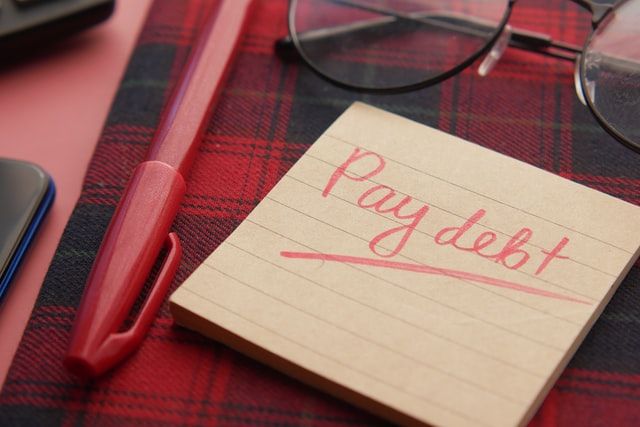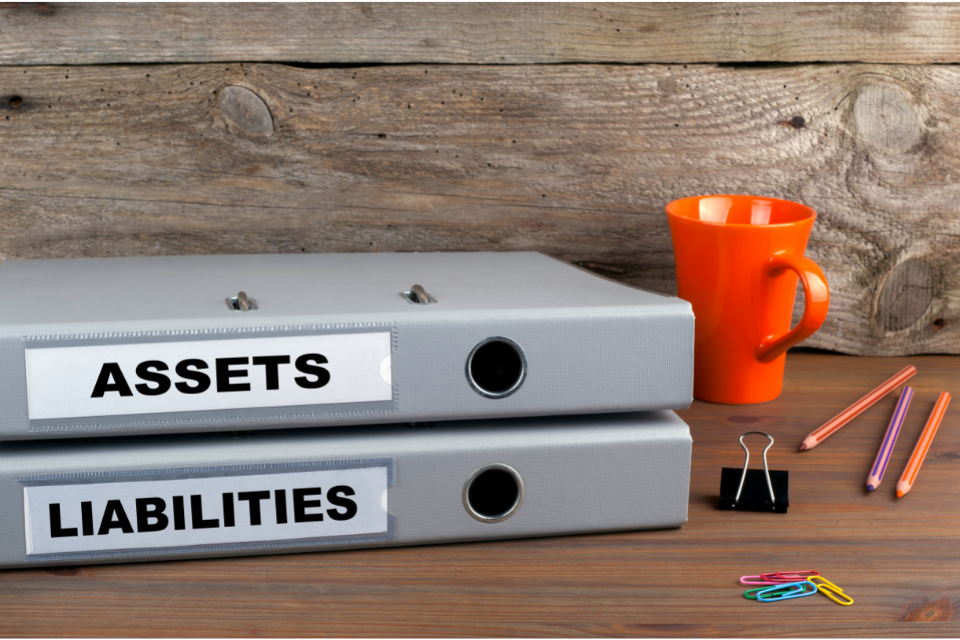The loan's principal refers to the amount borrowed and repaid by the borrower. You have a loan when you or your organization borrows money from a bank, and the initial principal is the amount borrowed.
Further, a portion of your loan payments will be used to pay down the debt, while the remainder will be used to pay down the interest that has accrued on the principal.
With ERP.AI, businesses can automate loan tracking, monitor repayment schedules, and gain insights into principal and interest breakdowns for smarter financial planning.

In today’s guide, we’ll learn about the principal of a loan and how the principal interacts with the money you borrow so you may make informed debt repayment decisions.
Understanding the Principal of a Loan
The loan principal refers to the amount of money you borrow from a lender, whereas interest refers to the charge you pay to borrow that money. When it comes down to it, the lender gains cash from your loan through interest. Your loan's interest rate is often represented as a percentage of the loan principal.
Loan principal, on the other hand, applies to all types of debt, including mortgages, small business loans, student loans, car loans, and credit card balances. Knowing your loan principal offers you an accurate and clear idea of how much money you owe the bank.
When you start repaying a loan, the entire sum includes the principal, interest accrued on that principal over time, and any extra fees and charges levied by the lender. The total cost of debt is influenced by all of these factors. It simply means that a borrower will pay back far more than the loan principal during the course of the loan.
In general, lenders set up payment plans so that you pay interest first, then principal, so that the interest rate is applied to the lower remaining amount as you pay off the principal. As a result, the lower your principal is, the lower your interest rate.
Principal of a Loan Working
As lenders prefer that you pay more interest, making a lower payment for a longer loan term isn't always the most cost-effective option for businesses.
When you pay off a debt, the lender amortizes it, rolling out your payments over time to keep your monthly payment steady. In this manner, you can budget for this additional monthly (or weekly) fixed expense.
Furthermore, your monthly debt statement or amortization schedule will show how much of each payment goes toward principal and interest.
Due to the fact that interest rates are usually paid first, a larger amount of your payment will be used to reduce the principal later in the loan period.
Example of Principal of a Loan
Consider the following scenario. You take out a loan for $10,000 to purchase some business workplace equipment. When you open the loan, you put down $2,000 as a down payment, therefore the initial principal will be $8,000. A 4% yearly interest rate is charged by the bank.
Your principal will remain $8,000 next month, but you will additionally have a $27 interest balance ($8,000 x 4% / 12). You make a $500 monthly payment. $27 of your payment goes toward your interest balance, while the remaining $473 goes toward principal reduction. Your loan principal is now $7,527 after the payment.
When calculating monthly payments, the bank amortizes the loan, spreading it out over time. This further creates a schedule that shows you how the loan will affect your finances. It includes how long it will take to pay off the principal, how much of your monthly payments would go toward the principal, and how much will go toward interest.
Furthermore, when a large loan is amortized, the majority of your monthly payments will go toward paying down interest rather than principal. Because your principal is large, you will owe extra interest.
As your monthly payments chip away at the principal, interest charges fall, and more of your regular payments go toward principal reduction. And, your monthly statement will show you how your payment is split in detail.
Identify Loan Principal
Your loan's monthly statement will usually display you how much you owe toward your principal balance as well as any interest or fees.
According to the US Department of Education, your student loan account information can be segregated by monthly payments, interest rate, daily interest (interest applied to your loan on a daily basis), and principal balance.
Your loan principal is also visible on your mortgage statement. The U.S. Department of Housing and Urban Development has a monthly mortgage statement sample that displays how much of your loan debts go toward interest and how much goes toward the original amount.
Where Can You Expect a Loan Principal?
An installment loan, which you repay with monthly or scheduled installments over a period of time, such as five or 30 years, will almost certainly have a loan principle. Examples include:
- Home equity loans
- Title loans
- Car loans
- Personal loans
- Mortgages
- Student loans
- Payday loans
How will the Principal be Repaid?
When you begin repaying a large debt, the majority of your minimum monthly payment will go toward interest, with the remainder going toward principal. That's because the bigger your principal, the higher your interest - and interest is paid first.
Your monthly payments may remain consistent (as long as you pay your minimums on time), but the proportion of your payment assigned to each portion will shift over time.
Furthermore, you will eventually start paying more in principal and less in interest as you make payments; the lower your principal, the less interest you'll pay.
Some loans allow you to make solely principal payments. These are frequently additional monthly payments over and beyond your minimum. You can pay your regular monthly payments. And, afterwards add a payment to your principal only.
Furthermore, certain lenders need notice if you want an additional amount allocated solely to the principle (and not interest). Therefore, before sending that extra check, make sure you check with your lender to see if they provide principal-only payments.
There may also be a method to arrange your payments such that all of your interest is paid first. However, it may not be the greatest option. Because you are not paying down the principal, your interest will not drop.
Principal on Investments
You may also notice the term principle used in relation to investing. An investor's principal, as opposed to the amount borrowed, is the sum of money they put into an investment.
Moreover, if the investment is a bond, the investor may receive interest payments on the principle. If it's a stock, the buyer can anticipate capital gains, which will eventually increase the value of the shares beyond the initial investment.
Loan Principals and Taxes
In some cases, such as with mortgage interest, the money you pay in interest on your loan may be tax-deductible.
However, any payments you make toward your principal debt are unlikely to be withheld.
Consult a CPA or tax specialist if you have any questions about how paying your loan principal affects your taxes.
How AI Optimizes Financial Management
AI algorithms detect patterns in cash flow and spending, helping to identify the best times to make payments or refinance. By integrating loan data with broader financial operations, AI enhances budgeting accuracy, improves financial planning, and minimizes human error.
Automated alerts and intelligent dashboards ensure timely repayments and complete transparency. Overall, AI transforms complex financial tasks into streamlined, strategic decisions—empowering businesses to maintain healthier balance sheets.
How Deskera Can Assist You?
Deskera Books can help you automate your accounting and mitigate your business risks. Creating invoices becomes easier with Deskera, which automates a lot of other procedures, reducing your team's administrative workload.
Final Takeaways
This brief digital guide has now come to a close. As a result, for your future reference, we've created a summary of essential points from this guide:
- The loan's principal refers to the amount borrowed and repaid by the borrower. You have a loan when you or your organization borrows money from a bank, and the initial principal is the amount borrowed.
- Loan principal, on the other hand, applies to all types of debt, including mortgages, small business loans, student loans, car loans, and credit card balances. Knowing your loan principal offers you an accurate and clear idea of how much money you owe the bank.
- Lenders set up payment plans so that you pay interest first, then principal, so that the interest rate is applied to the lower remaining amount as you pay off the principal. As a result, the lower your principal is, the lower your interest rate.
- When you pay off a debt, the lender amortizes it, rolling out your payments over time to keep your monthly payment steady. In this manner, you can budget for this additional monthly (or weekly) fixed expense.
- Your loan's monthly statement will usually display you how much you owe toward your principal balance as well as any interest or fees.
- When calculating monthly payments, the bank amortizes the loan, spreading it out over time. This further creates a schedule that shows you how the loan will affect your finances. It includes how long it will take to pay off the principal, how much of your monthly payments would go toward the principal, and how much will go toward interest.
- Your loan principal is also visible on your mortgage statement. The US Department of Housing and Urban Development has a monthly mortgage statement sample that displays how much of your loan debts go toward interest and how much goes toward the original amount.
- When you begin repaying a large debt, the majority of your minimum monthly payment will go toward interest, with the remainder going toward principal. That's because the bigger your principal, the higher your interest - and interest is paid first.
- Some loans allow you to make solely principal payments. These are frequently additional monthly payments over and beyond your minimum. You can pay your regular monthly payments. And, afterwards add a payment to your principal only.
- Before sending that extra check, make sure you check with your lender to see if they provide principal-only payments. There may also be a method to arrange your payments such that all of your interest is paid first. However, it may not be the greatest option. Because you are not paying down the principal, your interest will not drop.
- If the investment is a bond, the investor may receive interest payments on the principle. If it's a stock, the buyer can anticipate capital gains, which will eventually increase the value of the shares beyond the initial investment.
Related Articles












